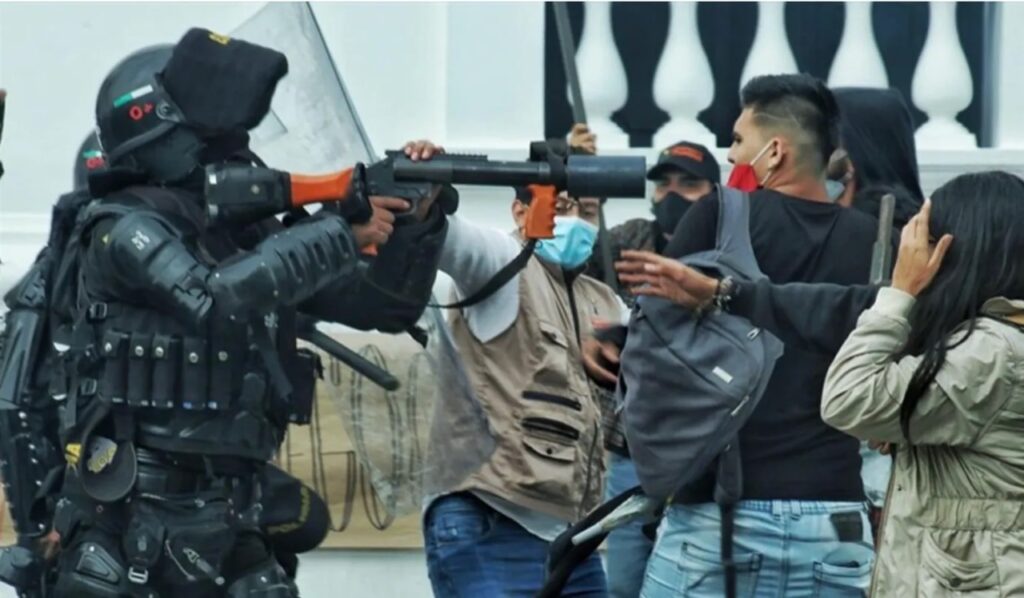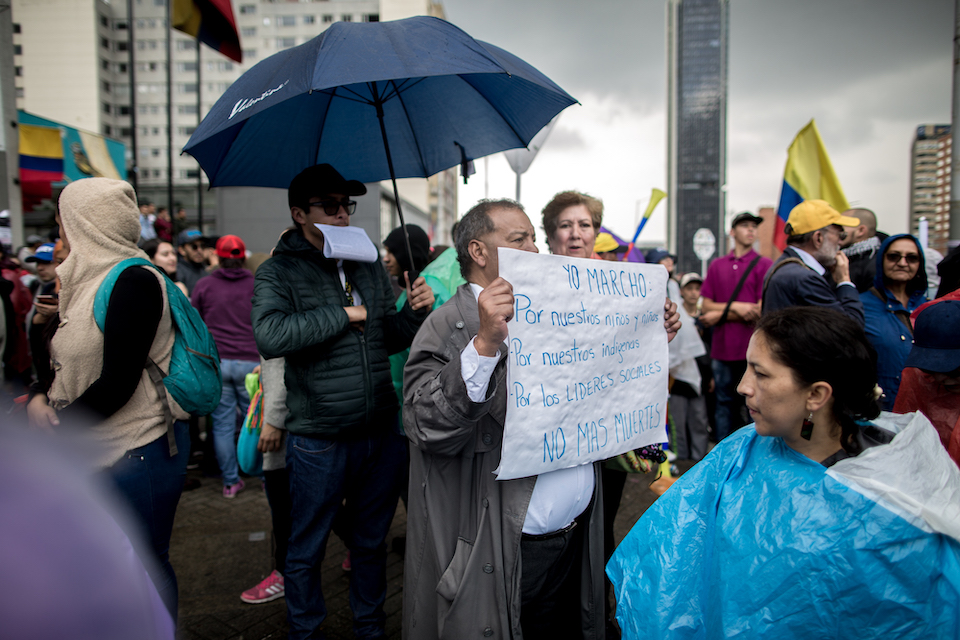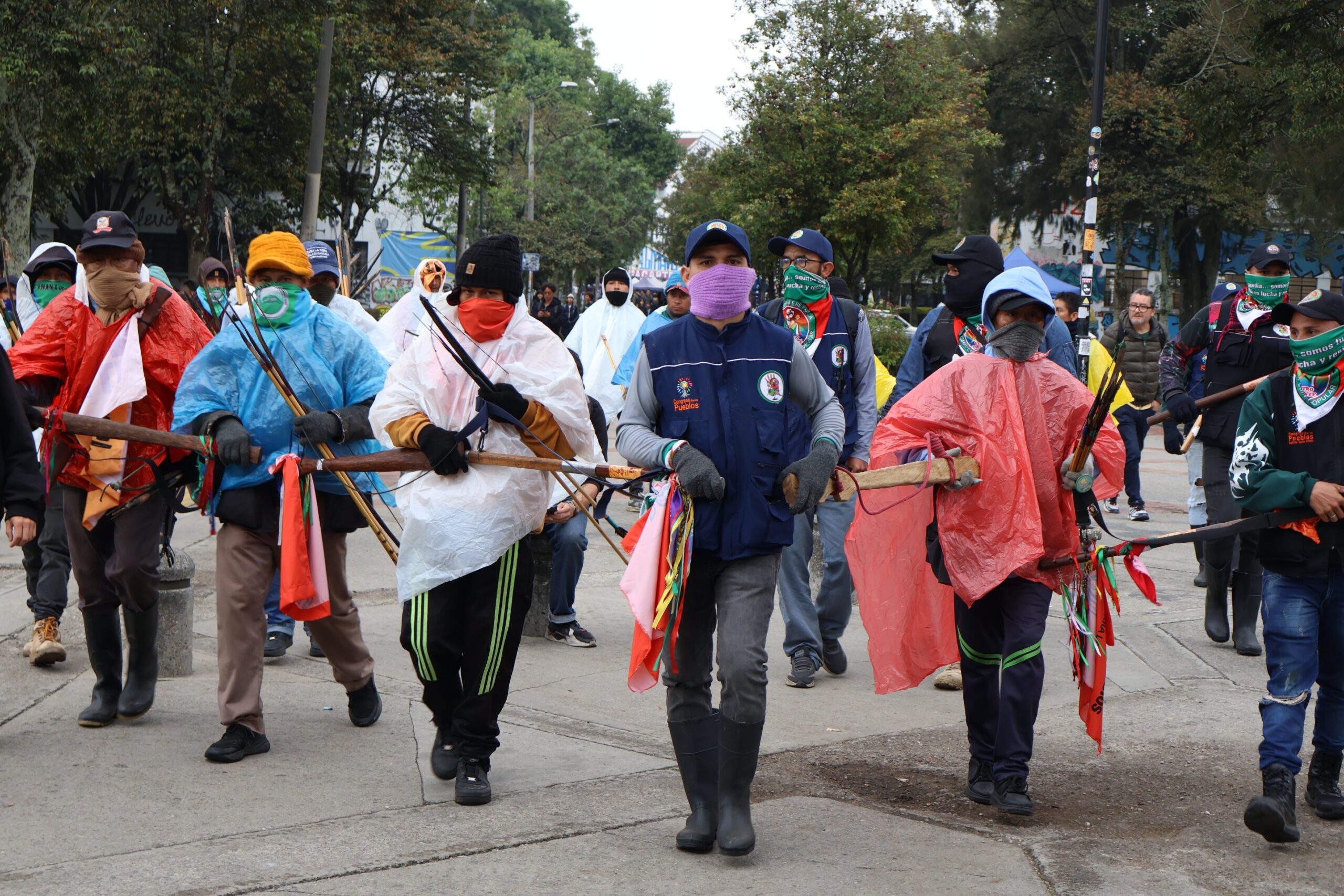Cali has become the epicentre of Colombia’s protests. With an already heavy presence of armed gangs and high rates of both unemployment and poverty, it was a tinderbox.

Cali, Colombia’s third biggest city, is well known as the salsa capital of the world. Before the pandemic, the city, which is not far from the Pacific coast, was beginning to grow its reputation as a hub for tourism, sports, and business.
However, the music, colour and cheer belied another story. Cali is in the Valle del Cauca department, which, along with fellow Pacific departments Chocó and Cauca, have borne the brunt of the violence that has proliferated in the vacuum left by the FARC. Coca growing, drug trafficking and violence between armed gangs is rife.
In recent weeks, this hidden side of Cali has made front page news. The extraordinary scenes of looting, destruction, and police brutality have shocked the nation. Road blockages have stopped food and medicine from reaching the city, leaving empty shelves in supermarkets. And public transport is barely working because of the damage to the city’s infrastructure.
What began as a nationwide protest against an unpopular tax reform turned violent, especially in Cali. NGO Temblores, which has been collating data on police brutality, estimate that 40 people have died nationwide during the two weeks of protests. At least 24 of them were in Cali.
Why Cali?
Cali has been hard hit by the pandemic. El Espectador’s analysis of DANE figures shows that 37% of people in Cali didn’t have enough money to cover their basic needs in 2020. That’s up from 22% pre-pandemic.
Plus, 59% of people in Cali are categorised as poor or vulnerable. And Cali’s unemployment rate at the end of last year stood at 19% (up from 12% in 2019). Nationwide it was 14% nationally, up from 9.5%.
In addition to high rates of poverty — and high numbers of people who have fallen into poverty during the past year — Cali has to contend with high levels of gang violence.
Since the peace agreement was signed in 2016, various armed groups have been competing for control of former FARC territories. Valle del Cauca, Chocó, and Cauca have all suffered. From illicit coca cultivation to illegal mining, there’s a lot of money at stake in areas that don’t have much government presence.
Each year, we’ve seen an increase in reports of threats, forced displacements, killings and kidnappings. And the lockdowns and travel restrictions of the pandemic have made it easier for armed players to act with impunity. The pandemic has put pressure on an already fractured society, and in Cali, the cracks are really starting to show.
What about the reports of police brutality?
It would be difficult to deny the instances of brutality and excessive force we’ve seen in the past two weeks, from both the police and the military. There are reports of shootings, beatings, arbitrary arrests, and rapes — particularly in Cali.
On May 4, the Spokesperson for the UN High Commissioner for Human Rights, Marta Hurtado said. “Our office in Colombia is working to verify the exact number of casualties, and establish how this terrible incident came about in Cali. “
She continued, “We are deeply alarmed at developments in the city of Cali in Colombia overnight, where police opened fire on demonstrators protesting against tax reforms, reportedly killing and injuring a number of people.”
Other international organisations such as Amnesty International have also condemned the disproportionate use of force. “Police have used force indiscriminately and disproportionately, and there are alarming reports of sexual violence and disappearances,” it said in a press release.
During Duque’s trip to Cali he said there would be zero tolerance towards any police or military actions that break the constitution. He said, “Already, by the will of the commanders, the work of the Procuraduría, Fiscalía and others, 65 disciplinary actions have been adopted: 27 for abuse of authority, 11 for physical assault, 8 for homicide, 19 for other behaviors.” He also said that 667 people had been arrested for vandalism.
However, it remains to be seen what those investigations will uncover and whether all those responsible will be prosecuted. Moreover, there’s still no commitment to any kind of police reform or even an examination of the structural issues in the police that allow such violations to take place.
What about this standoff between residents and indigenous groups?
On Sunday, violence broke out between residents of Cali’s comuna 22 area and indigenous minga who were passing through.
You’ll find very different reports about what happened in the Colombian press. Some report that indigenous groups attacked local residents. And others report the opposite — that residents attacked the indigenous groups.
What appears to have happened is that chivas carrying indigenous people were trying to travel to support the protests in the centre. Organised groups of people in cars and vans wearing white t-shirts tried to block their way. At some point they opened fire on the chivas. At least eight indigenous protestors were injured, and, from the videos, it looks like they then retaliated.
Residents justified their actions to the press, saying it wasn’t right that the indigenous communities could move freely while they were suffering restrictions and shortages because of the blockades.
We’ve seen other instances of citizens arming themselves and taking the law into their own hands to face protestors in recent weeks. Let’s hope it isn’t a growing trend.
What’s a minga?
A minga is an indigenous word (coming from Quechua minka) that can encompass various meanings – it’s all about coming together for a common purpose.
Most recently, the word has become associated with peaceful demonstrations and resistance. The indigenous communities in Colombia have called mingas to rally against the killings of social leaders and indigenous people, mining, environmental destruction and forced displacement.
One member of the CRIC (Consejo Regional Indígena del Cauca), Leonardo Saavedra, said “The organisational plan that the central area of the Kokonuko people has proposed is to make visible the actions of injustice, […] such as the one generated by the public force and its excessive way of acting and responding to the needs and demands of the Colombian people.”
What’s the government doing?
After initially saying he couldn’t go, President Duque has been to Cali twice this week. He first made a middle-of-the night whistle-stop trip to Cali on Monday night, arriving shortly after midnight and leaving around 4am.
He returned yesterday, and met with local authorities, including mayor Jorge Iván Ospina, local businesses and young people.
Here are some of the announcements he made during his visit:
- He said that attacks carried out by state forces during the demonstrations will be fully investigated.
- He promised free public university and college for estrato 1, 2, and 3 students for the second semester of 2021.
- He committed to a ‘Gran Pacto’ — a process by which young Colombians will be able to make themselves heard, beginning in Cali.
- He called for the end of all blockades. Duque said these infringe the rights of all Colombians to access food, medicine, and vaccinations.
Have the ELN infiltrated the protests?
Colombia’s defence minister, Diego Molano, told CNN that some of the violence we’ve seen was committed by organisations linked to the FARC and ELN. “What is happening in Colombia is that groups of organised criminals with connections to organised groups seek to generate instability, and they do it systematically, deliberately, and with illegal financing connected with drug trafficking,” he said.
It’s not the first time the government has blamed the ELN and other armed groups and there’s likely some truth to it. But it’s also not the whole truth.
It’s too easy to blame the FARC dissidents and the ELN for everything that goes wrong. Not only does it make it easier for them to justify the actions of the public forces in killing civilian protestors, it also undermines the protests themselves.
It’s rarely as simple as having “good” protestors and “bad” protestors. And if you break it down that way, the violence becomes the fault of those “bad” players rather than an overwhelming anger at the establishment.
On top of which, there are also claims that other parties — including the authorities — infiltrated protests to deliberately stir up trouble. Such things muddy the waters even further.
What now?
Today, the indigenous minga returned to Cauca where they plan to continue the strike. Aida Quilcué, national coordinator of the CRIC, told El Tiempo: “What brought us to Cali was the killing of young people at the points of mobilisation. We came to complete a task which was partly to accompany them, to minimise the deaths within the framework of mediation.”
It looks like Duque’s visit to Cali has helped calm the situation somewhat. At least he’s shown the leader of the country is not ignoring the problem. The city is working on getting rubbish collection and public transport back up and working. And the Defensoría del Pueblo — Colombia’s ombudsman — has negotiated some humanitarian routes through the blockades, but several routes into the city are still blocked.
Unfortunately, many of Cali’s problems can’t be tackled overnight.
Authorities need to open enough dialogue to stop the protests — and convince people that brutality from public forces won’t go unpunished. Then they need to fix the infrastructure that’s been destroyed or damaged, such as the bus network, so that people can get back to work.
And then they need to find ways to rebuild Cali’s economy, provide jobs, especially for the city’s young people. That’s no mean feat for a government that’s grappling with high unemployment and the economic impact of COVID.





